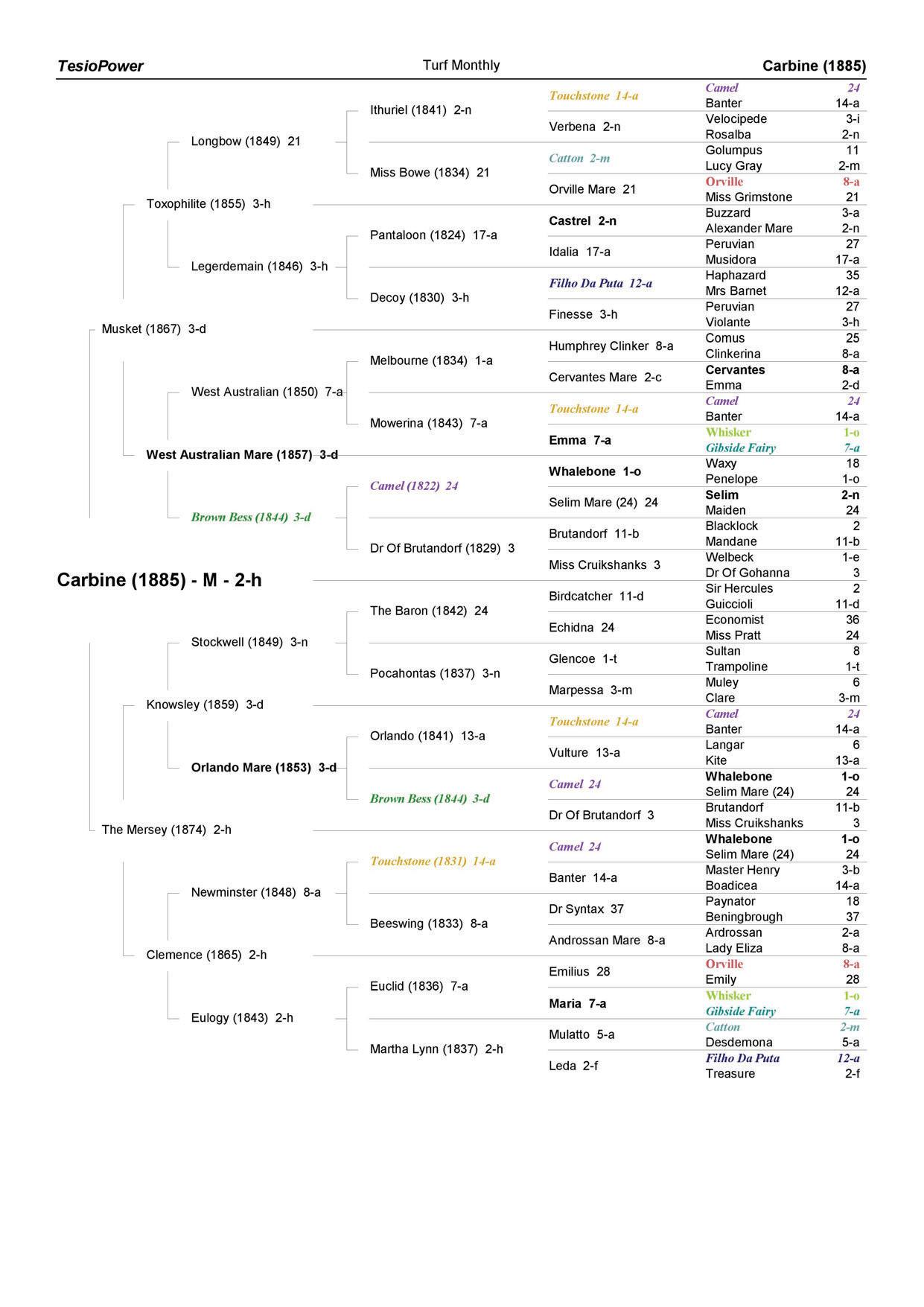THE NEW CUPS QUEEN
BETTER THAN PHAR LAP
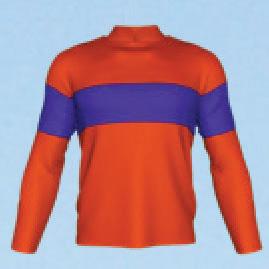
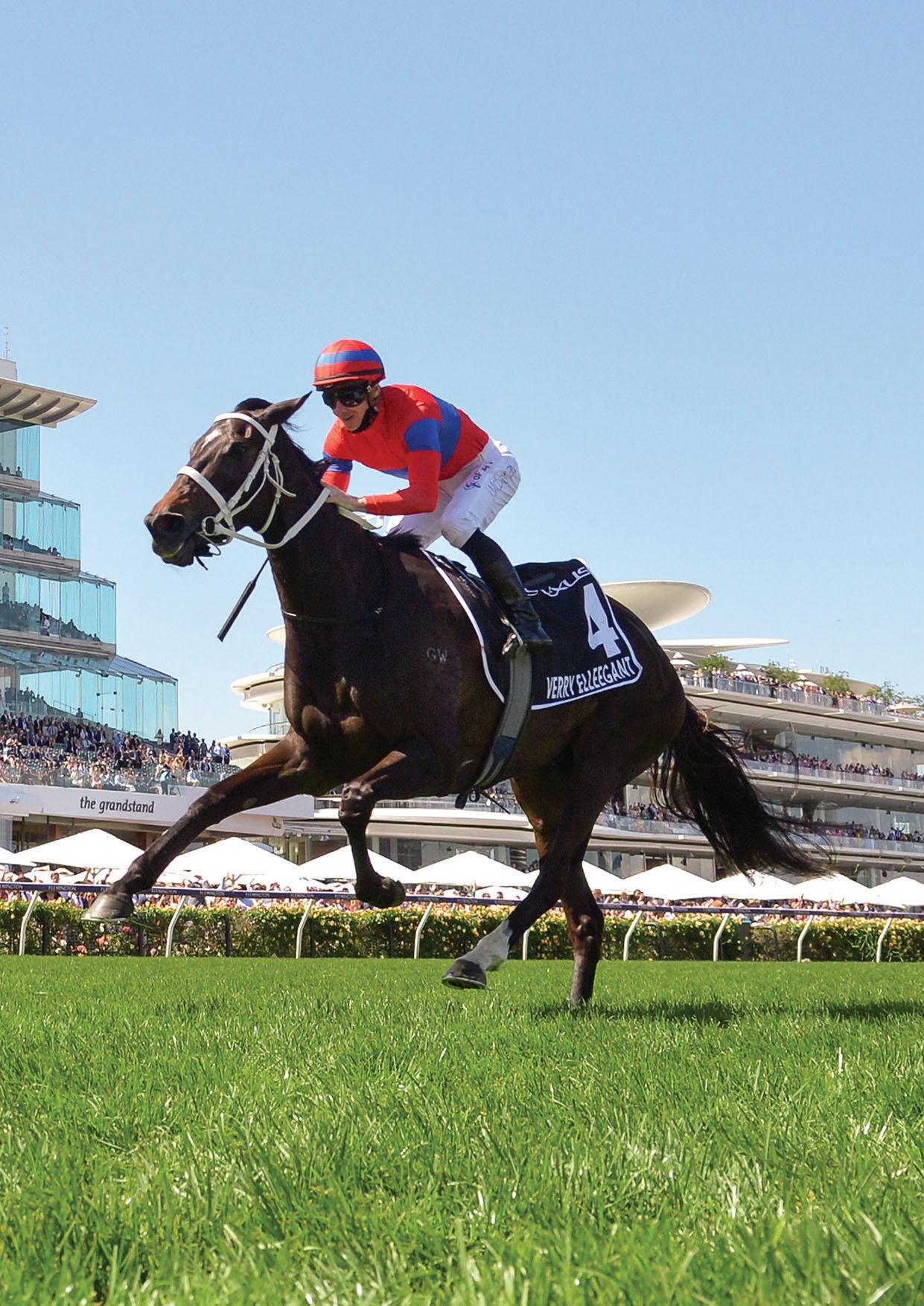
FORGOTTEN
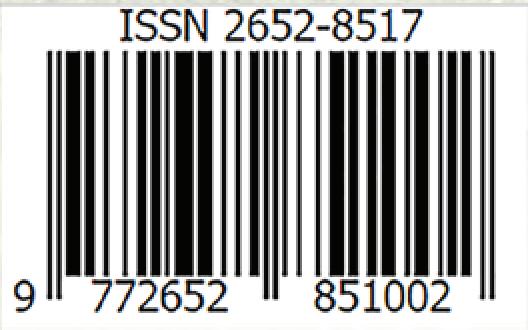




We have looked at a lot of champions who made their name in the Melbourne Spring over the last couple of months. Some have been that rare type that has been able to win the Victoria Derby and the Melbourne Cup, two of the jewels in the Victorian racing Spring carnival. Others, sometimes for reasons not of their own making, fell just short in the Derby but went on to become outstanding gallopers. Some were champions. And then there is Carbine. We have been spoiled by wonderful horses, and greats like Winx, Makybe Diva and Black Caviar have earned their remarkable places in history. But in Australian folklore, two horses stand head and shoulders above all others. One of course is Phar Lap, about who so much has been written that we have never chosen to tell his story. The other was the horse that started it all. Carbine.
Carbine was foaled in NZ in 1885, a son of the famed stallion, Musket who was three times to lead the Australian champion sires list, a remarkable effort for the time considering he stood across the ditch. He was notably the sire of another great hero of the turf and breeding shed, Trenton, leading sire Nordenfeldt, Martini-Henry, winner of the VRC Derby, St Leger and Melbourne Cup and later sire, and Maxim, a good sire in New Zealand, Australia, and later California. His story was not what we usually associate with a champion stallion. Musket had been a good racehorse in England, racing for four seasons before retiring to the Bonehill paddocks, in Staffordshire, in 1873 to begin stud life. His fee was 40 guineas but in his first season he sired only seven foals. The following year Musket was credited with 14 foals. In
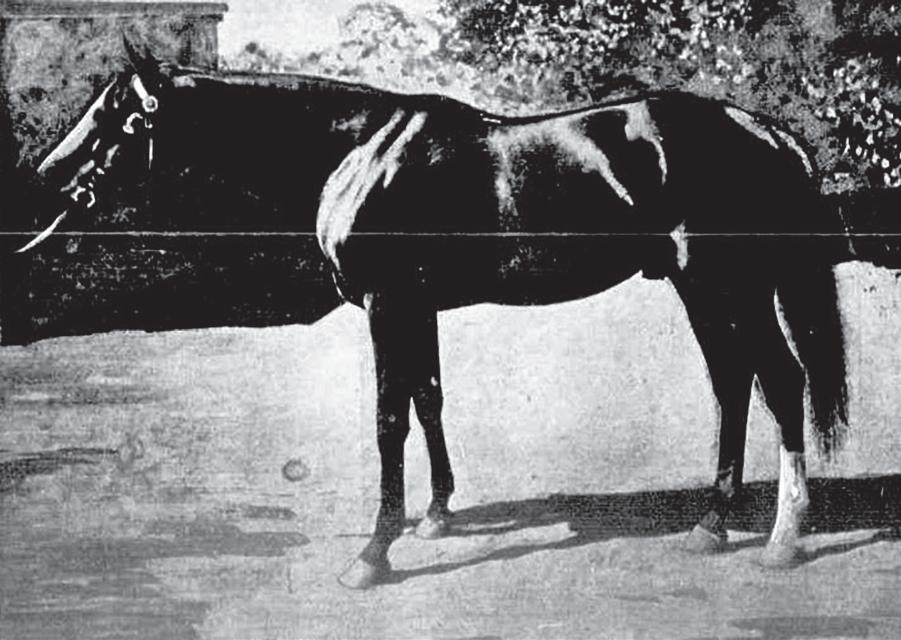
his third season the Grahams of Yardley sent 10 mares to Musket, and that year he sired 25 foals. Musket served six seasons in England, and was credited with 66 foals, but there were only 20 winners among them. At the end of 1878, Thomas Russell was in England searching for a stallion for the Waikato Agricultural Company in New Zealand with a view to breeding coaching, harness, and utility horses. Russell decided that Musket was of the right type, and was impressed with his size and substance, and his excellent racing record. Musket had been inherited from the Earl of Glasgow, whose will stipulated that the horse could not be sold, so Mr Payne of Bonehill overcame the difficulty by leasing Musket for 99 years for £500. Musket was landed in Melbourne where William C Yuille and Co tried to sell him for 700 guineas but could not find a buyer. Musket went on to NZ on board the steamer Hero in the winter of 1879. He took up duty at Sylvia Park, Auckland, which was owned the New Zealand Stud Company, and there he remained until his death in October 1885, the year that Carbine was foaled. As Musket did not meet with early success in England he was neglected by NZ breeders, and remarkably sired only 20 foals in his last three seasons. In all, Musket only stood for six seasons yet sired 28 stakes winners.
Carbine was out of the imported mare Mersey by Knowsley, a son of Stockwell. In turn, she was out of Clemence by Newminster out of the wonderful mare, Eulogy. Eulogy had produced three stakes winners in Imperatrice who won the GB Park Hill Stakes, Imperieuse winner of the One Thousand Guineas and St Leger Stakes, and Martyrdom who won the GB Prince of Wales's Stakes. As a yearling, the colt was offered on January 4, 1887, where he was sold to Mr Dan O'Brien for 620 guineas. The highest price at the sale was paid for Martini-Henry's full sister, Forest Queen, by TS Chernside, of Werribee, Victoria. Musket’s popularity in the sales ring was confirmed when we consider that Mr Chernside also purchased the Musket filly out of Onyx who was to be named Beryl for 1040 guineas. Another champion son of Musket went through the same sale in Manton who was out of Tres Deuce and made only 445 guineas while another Musket colt out of Locket who was later to race under the name of Chiau Shot made 700 guineas. Yet another Musket stakes

winner in Precedence out of Maid Of Honour was to make only 175 guineas at the same sale. Perhaps the hard luck story of the day was that of the Hon. William Pearson who sent his representative to the sale in order to purchase the Musket colt out of Mersey. For some reason, the looks of the colt failed to impress, and he instead purchased a Musket colt out of Leila for 510 guineas who was to race as Whitworth without success.

Carbine first faced the starter as a 2yo in the Hopeful Stakes at the Tattersall’s Club meeting at Christchurch on 10 December 1887. Over the 1000m, he beat Ravenswing, Rainbow and two others. On New Years Day 1888, he again defeated the filly, Ravenswing who was to later go on to win the Autumn Stakes the following year and also to become a good broodmare, this time in a field of nine in the Middle Park Stakes over 1200m. Seven weeks later he beat Manton in the Champagne Stakes over the same distance at Dunedin. Carbine then went to the Canterbury meeting in April winning the Champagne Stakes and Challenge Stakes on consecutive days over 1200m, both times beating Sommeil who had won the Canterbury Welcome Stakes over 800m the year before. A well-earned rest ensued as the colt was readied for his three year old season, and to say farewell to his country of birth.
The unbeaten 2yo arrived in Sydney in preparation for his first start as a 3yo in the Victorian Derby. The boom colt fell while being unloaded from the ship, and O’Brien was concerned that he had suffered a lasting injury and took it upon himself to thoroughly inspect Carbine. Finally, he was satisfied that Carbine had recovered from his accident, and the colt hit the track. Local onlookers were far from impressed with his early efforts to acclimatise. He was described as not being a taking horse to the eye, and one who was lazy in his work. Still, the early odds of 8 to 1 in the Derby were quickly taken and he arrived in Melbourne under close scrutiny. Unlike the people from Sydney, track watchers at Caulfield where Carbine was stabled had a much more favourable impression. His gallops were outstanding, and he was considered a moral for the blue riband and was backed into the 7/4 favourite. We will let the Melbourne Leader newspaper of 10 November 1888 take up the story:
The bird cage was crowded by people anxious to get a peep at the Derby candidates, and especially Carbine, who held a great levee. As the process of making the crack's toilet proceeded men jostled and pushed to get a glimpse of the colt that had for weeks past been declared a certain winner by most of those best able to judge. Seldom has
a Derby favourite created greater public interest. His feed has been imported from New Zealand, so that a chance should not be thrown away by change of diet, the work has been done at grey dawn of day, and his owner has been under the delusion that strangers had no right to look at him closely even on a public recreation ground, but that misapprehension has been dispelled. Carbine is certainly not a beauty, but is beyond doubt a good colt, and was as fit as hands could make him despite the opinion of wiseacres who declared that he had not done enough work. The handsomest of the lot was Pearl Shell, and there were not a few who hoped that O'Brien would pull off the double as the beautiful daughter of Musket walked round the paddock. The friends of Melos maintained their confidence till the last, and when Hales was seen on the angular looking Ensign it was known that Volley could have no chance. Aldivalloch, the South Australian representative, is a fine colt, but was not half fit. Never in the history of racing at Flemington has the result of an important race been so completely due to horsemanship as was this Derby of 1888. Hales (not Ensign) won it by cool, artistic judgment; Derritt (not Carbine) lost it by erratic and unskilful horsemanship. What induced him, after going half-a-mile, to dash from the rear to the front as though finishing the race, it is impossible to imagine. The erratic movement was in itself enough to lose the race, but so superior was Carbine to the others, that when Wycombe, who had made all the running, retired in the straight, the favourite looked a certain winner until Hales called upon the carefully nursed Ensign for one run at the half distance, and the running in the earlier part of the race told its tale. Amidst a scene of the wildest enthusiasm the artist scored a well-deserved victory, and landed Ensign a long head in front of a colt that certainly ought to have won. It was hard lines for Carbine's owner, after sacrificing a number of important engagements in New Zealand, to see "a real good thing" thrown away, and the result simply shows that the best of jockeys, like other folks, are liable to error, for in New Zealand, Derritt is a recognised champion in the saddle. At the finish there were only the two in it,

Melos finishing a bad third, a head in front of Pearl Shell. Mr White's victories are always popular, as they deserve to be, and even men who had lost their money on Carbine cheered the blue and white colours heartily, and positively roared applause at Hales, who throughout his brilliant career has never accomplished a more pronounced triumph. Tom Payten was a proud man as he led the winner away from the weighing yard to the terrace in front of the Governor's box to be decorated by Lady Loch with the blue ribbon of Victoria. Ensign is by the celebrated sire Grandmaster from Formos and is by no means a taking horse in appearance, and not being a good looking one has probably been underrated. Considering the pace that Wycombe appeared to make, the time was astonishingly slow, and it cannot be denied that the field was very much below first class form, consisting of a lot that would not have been able to live a furlong besides animals like Trident, Nordenfeldt, Abercorn, The Australian Peer, and horses of that stamp.
The VRC Derby was Carbine’s first run past 1200m, and five days later the colt backed up in the Flying Stakes over 1400m with a comfortable win over Pippo. Two days later Carbine stamped his quality with another effortless victory in the 2000m Foal Stakes beating Wycombe. Interestingly Carbine never again had the opportunity to race Ensign who tragically broke a fetlock only a few days after the Derby while running in the Melbourne Cup. Perhaps what is even more remarkable is that Dan O’Brien then chose to put his champion up for sale where he was purchased by Mr Donald S Wallace for 3000 guineas. Carbine, in the magpie jacket and red cap of his new owner, and now trained by famed trainer, Walter Hickenbotham, was unsuccessful in his first two appearances. He ran third to Sedition and Lochiel in the VRC Newmarket Handicap on 2 March and played second fiddle to Lochiel in the Australian Cup three days later. Following the sale of
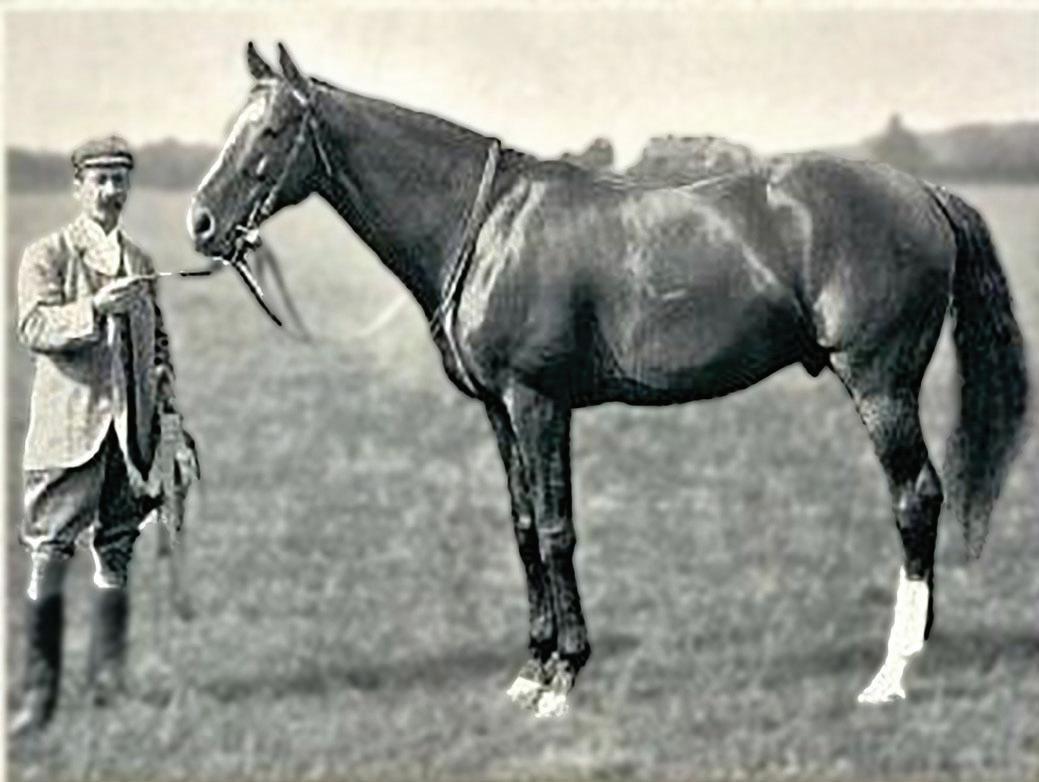
Carbine, he was ridden by Mick O’Brien who had ridden Menton to win the 1888 Melbourne Cup. The jockey O’Brien formed a close association with the horse and rode him through until 1890 at which time O’Brien was struck down with illness, dying tragically young at the age of only 34. Only two days after his Australian Cup second, Carbine won his first race for Don Wallace with success in the prestigious Champions Stakes beating Abercorn comfortably over the 4800m. At the end of the Flemington carnival on 9 March he won the All-Aged Stakes over 1600m beating Sinecure before lining up later that day to win the Loch Plate over 3200m beating Lochiel. In the space of a week Carbine had five starts over distances ranging from 1200-4800m for three wins, a second and a third. There was no doubt by know that Carbine was the best horse in Australasia. Carbine then headed north for the Randwick carnival which was held over a five day period from 22-27 April 1889. He started by running second to Melos over the 2400m of the Autumn Stakes but that was to be his last defeat in the carnival. Carbine turned the tables on Melos two days later in the 3200m Sydney Cup, a race in which he carried a remarkable 5.5kg over wfa. The following day Carbine won both the All-Aged Stakes over 1600m and the Cumberland Stakes over 3200m. His win in the Cumberland was one of the most remarkable in that Carbine almost fell in the race, yet recovered to haul in the leader, Lochiel, on the post. Two days later he rounded off not only the carnival, but a rather remarkable 3yo season by easily beating Abercorn over the 4800m of the AJC Plate.
Carbine returned as a 4yo but his campaign hit a hurdle as connections fought a cracked heel in the horse. Surprisingly, this issue was noted when he was sold to Wallace, but up until now had been manageable. The affliction was to persist for the rest of his career. Carbine ran second to Dreadnought in the Caulfield Stakes in his first 4yo start over 1800m on 12 October 1889. He then ran third to Abercorn on the first day of the Flemington carnival over the 2000m of the Melbourne Stakes. Carbine then started in the 1889 Melbourne Cup carrying the big weight of 63.5kg. Second top weight was carried by the unlucky Melos who had 56kg. With his hoof held together with wax-end, Carbine settled toward the rear as was his normal pattern. Melos had been a hot favourite for the race but drifted markedly in the betting in days when some questionable practices were commonplace. Melos was checked on at least six occasions during the race with an allegation that certain jockeys had gone out with the intention of ensuring the favourite could not win. Carbine hit the front early in the straight, but the light weight carried by eventual winner Bravo told in the end with Carbine finishing a creditable second, with the desperately unlucky Melos in third. Two days later Carbine won the Flying over 1400m this time turning the tables on Dreadnought, but this was followed another two days hence with Carbine’s only unplaced run in his career. He finished last in a field of four in the Canterbury Plate over 3600m won by Abercorn. Carbine returned with blood flowing freely from his split hoof and it was clear that the champion had a serious injury. He was given a good spell and returned to some of the best form of his career.
Carbine had his first start for the Autumn on 1 March at the Flemington carnival. He won the Essendon Stakes over 2100m beating Singapore before running third to Melos in the Champion Stakes over 4800m five days later. On 8 March, he won the All-Aged Stakes and Loch Plate as he did the year before. It was then again to Sydney for the Randwick carnival where he won five races in the space of seven
days in the Autumn Stakes, Sydney Cup, All-Aged Stakes, Cumberland Stakes and AJC Plate. It was then again off to the paddock before returning for his 5yo season that was to be his greatest.
A s a 5yo, Carbine was almost unbeatable. He started 11 times and was beaten only once, an unlucky second to Marvel in the All-Aged Stakes in Sydney. Carbine returned with a new jockey, with Bob Ramage replacing Mick O’Brien who had retired due to illness. Carbine started by winning the Spring Stakes and Craven Plate at Randwick in September before returning to Melbourne to win the Melbourne Stakes, Melbourne Cup, Champion Stakes and All-Aged Stakes. Carbine’s Melbourne Cup victory was considered by many not only his finest moment, but also the greatest performance by a horse on an Australian racetrack. Not only did he face the most starters ever in a race at 39, but he carried a weight record of 10 stone 5 pounds or 66kg. He won by two and a half lengths in race record time in perhaps the most popular victory on an Australian race track. We will let the Leader newspaper from Melbourne describe the day:
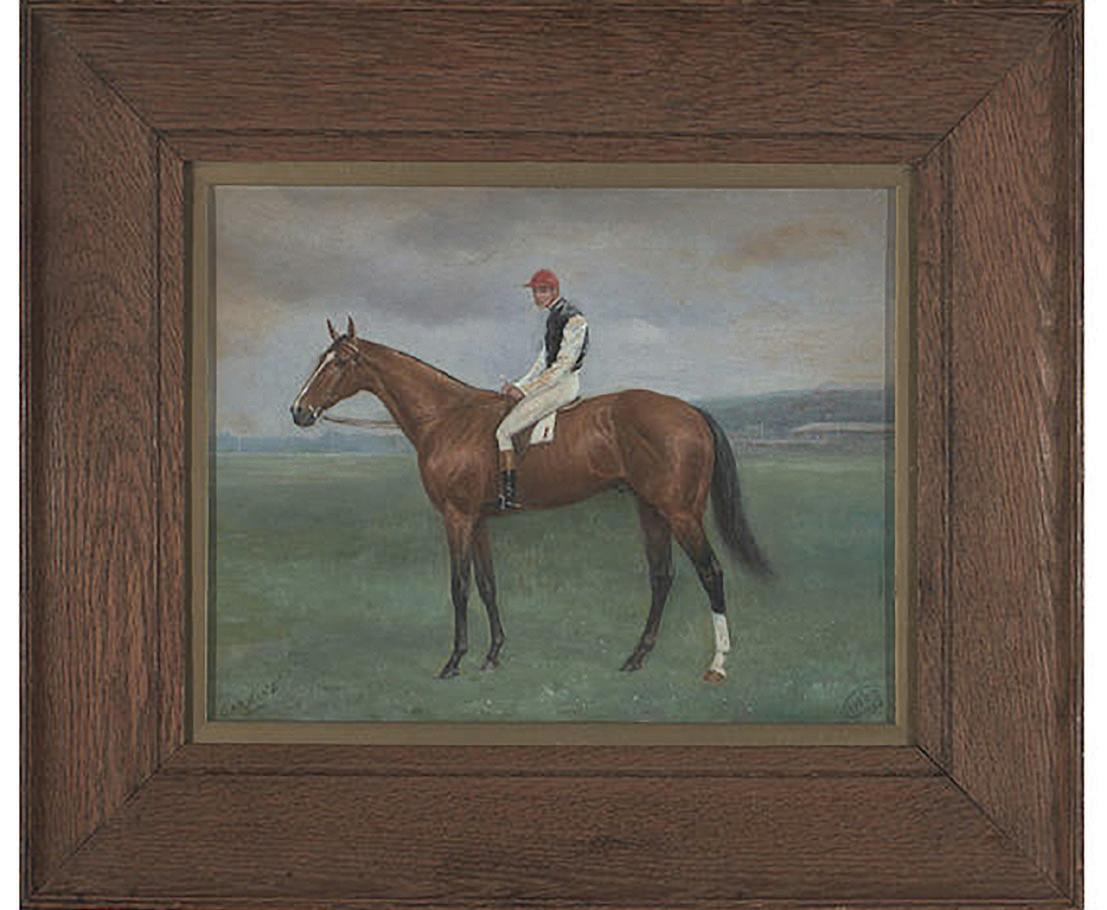
Leader (Melbourne, Vic. : 1862 - 1918, 1935), Saturday 8 November 1890, page 20
Many hearty ovations have in the past awaited popular winners at Flemington, but never in the history of the Australian turf has there been such a demonstration as that which marked Carbine's phenomenal victory. Even before the race started
it was made manifest that the famous son of Musket and Mersey was "the people's favorite," as he was heartily cheered as he emerged from the saddling paddock and walked slowly down to do his preliminary. Carbine was the first to appear on the course, and on his arrival at the post such a rush of admirers took place that the assistance of the police was necessary before the course could be cleared. Long before the No. 1 was hoisted by Mr. Dakin, in fact before the champion had reached the winning post, the spectators burst into wild expressions of delight and admiration, as it could be seen some distance from the post that Carbine would have to fall down to lose. As the clerk of the course escorted him back to the weighing yard, winner of the most valuable handicap race ever run in the world, the scene was one to be remembered. Inside the enclosure his popular owner was receiving the hearty congratulations of his friends, and acknowledging the cheers of the assembled thousands, whilst at the gate next to the judge's box stood Carbine's skilful and trusty trainer, Walter Hickenbotham, waiting to have a look at his favorite as he turned to scale, and to be the first to congratulate Bob Ramage, who had ridden him to victory. Many there were, doubtless, who regretted the enforced absence from the winning saddle of O'Brien, who had steered Carbine so well, so frequently, and so successfully, but it is bare justice to Ramage to say that a better race could not have been ridden by any man who ever crossed a horse. A less level head might have been tempted to cut it a bit finer, but Ramage realised that this was the race of his career, and that the interests at stake were too great to be trifled with, and therefore even when he had everything in the race at his mercy, he wisely continued to keep Carbine at his top, and drove him home with undiminished vigor. The mighty son of Musket and Mersey has by this culminating triumph established his undeniable right to be considered the greatest horse that has ever been foaled or seen in Australasia, and it is pleasing to reflect that, in addition to being a great performer, Carbine is owned by one of the most honorable and straight going sportsmen of the day, whose Falmouth colors are synonymous with everything that is pure and noble in connection with horse racing. Carbine may be said to be now in his prime, and with ordinary luck he can be relied on to add to the splendid performances enumerated

below. Carbine was bred by the New Zealand Stud Company and bought as a yearling for 620 guineas by Mr. D. O'Brien, in whose colors he never suffered defeat as a 2-yearold. His first reverse was in the VRC Derby, 1888, when he was beaten a head by Ensign, owing to the indifferent riding of the New Zealand jockey, Derrit, who allowed himself to be fairly out-generalled by Hales. At the same meeting he won the All Aged and Foal Stakes, and afterwards became the property of Mr DS Wallace for 3000 guineas, for whom he gained his first victory in the Champion Stakes, after running third in the Newmarket Handicap and second in the Australian Cup. Since the day of that memorable purchase Carbine has won something like £24,000 in stakes alone for his popular owner. By his great triumph in the Melbourne Cup Carbine has broken more than one record in connection with that famous event. He carried 10st 5lb, a weight never previously borne to victory in a Melbourne Cup, and beat the best time previously recorded for that race by a quarter of a second, whilst it is also worthy of remark that the number of starters for the Cup (39) had never been equalled in any previous year. Indeed the more this last great run of Carbine's is considered in detail the more phenomenal does it appear.
After his victory in the Melbourne Cup, Carbine’s injury again flared badly. Few of the time knew that the stallion did not leave his stall for a week following the race. Another spell ensued and he returned for the Essendon Stakes over 2100m at Flemington on 28 February 1891. The Essendon Stakes was remarkable in that bookmakers, for the first time, refused to take a wager on Carbine, preferring to bet

"Five to one bar one" on the rest of the field. He then won the Champion Stakes before his final Melbourne success in the All-Aged Stakes for the third year in succession. Within a week Carbine was in Sydney suffering his only defeat that season in the 1600m All-Aged Stakes behind Marvel. He did not have to wait for long to get his revenge, beating that horse in the 3200m Cumberland Stakes later that afternoon. Two days later Carbine had his final start, fittingly winning the AJC Plate for the third consecutive time in easy fashion at the unbackable odds of 10/1 on. After a spell, Carbine returned to work but went amiss with the champion showing swelling in the leg that had caused all of the problems with his hoof. The swelling would go down with rest but reappear as soon as the champion galloped. He was officially retired in October 1891 with 33 wins from 43 starts and prizemoney of £29,626. It was an Australasian record that stood for over 30 years until beaten by Eurythmic in 1922. This remains the longest any horse in Australia has held the title.
B efore we get to the stud career of the remarkable Carbine, there are a couple of observations that need to be made. Carbine was known to most simply as “Old Jack,” an endearing term that made the crowds connect with their champion even more. His behaviour also warrants mention. Old Jack would simply refuse to proceed to the start of a race until it suited him. As reported in newspapers of the time:
Carbine was undoubtedly a brainy horse. He was no funker, but he seemed to dislike having to go the wrong way along the course before doing his preliminary under colors. Often I have seen his trainer urging him by shaking an umbrella behind the horse when he refused to respond to the thumps of his jockey's heels. Of course he raced left-handed at Flemington and right-handed at Randwick; and yet this equine paused many times ere he was coaxed along the wrong way up the straight to commence his preliminary. He was a good tempered equine and never knocked himself about any. Always he seemed to carry a lot of flesh, and yet he was a great stayer, and a brilliant galloper over half-a-mile. Therefore he was a true racehorse — good over any distance.
The later champion Gunsynd was to have a similar trait, and many suggested that the horse simply refused to move until he felt he had received due accolade from the adoring public. What is most remarkable is that Carbine appears quite prominently in the pedigree of Gunsynd so perhaps it was a trait he inherited from Old Jack. An interesting point was made many years later when trying to compare Carbine and Phar Lap. One measure was their respective handicaps in the Melbourne Cup. Both raced in the Cup as 4yo’s, with Carbine running second in 1889 carrying 10 stone (63.5kg). In comparison, Phar Lap won the 1930 Cup as a 4yo carrying 9 stone 12 pounds (62.5kg). On face value it would appear that Carbine was more highly rated by the handicapper, but we need to remember that geldings were given a 3lb (1.5kg) allowance meaning that Phar Lap would get the nod by one pound (0.5kg). We have long moved on from the allowance for geldings, but another interesting comparison is their weights in the same race as a 5yo. Carbine created a weight carrying record by lumping 10.5 (66kg) to victory. In contrast, Phar Lap carried 10.1 (64kg) but could only manage a disappointing eighth, anchored by the big weight. Allowing for the 3lb allowance, it puts Carbine a pound ahead as a 5yo notwithstanding the fact that his was a dominant win. In the GREATEST CUP NEVER RUN, an idea in 2010 to recreate a race between the top 24 winners of the Cup, the VRC Handicapper, Greg Carpenter assigned Phar Lap 60kg and Carbine 59kg. Even though it was voted that Phar Lap narrowly beat Carbine, history would suggest that at their best, Phar Lap would not have been able to overcome the weight difference which dramatically favoured Carbine. Finally, to end this section on the immortal Carbine, what better way than to hear some comments from Walter Hickenbotham, the Hall Of Fame trainer:
He was one of the quietest horses I ever looked at, but he was very sensitive and wonderfully intelligent. If a man gave Carbine a clout in his box the old fellow would repay the injury if he had to wait for days, and he never made a mistake as to his man. I think the success of Carbine was due to his perfect action. Never was a horse born with better action.
The great event is o'er, The grandest horse 'ere trod a course, Has led them home once more.
I watched with pride his sweeping stride, Before they ranged in line, As far and near a ringing cheer, Was echoed for Carbine.
The start was made, no time delayed, Before they got away, The horses great, some thirty eight Were eager for the fray.
No better start could human heart The sportsman ever show, As Watson did, each jockey bid: "Get ready! Forward! Go!

With lightning speed each gallant steed, Along the green sward tore, Each rider knew what he must do
But Ramage knew his mount was true, Although he'd 10—5 up, For Musket's son had great deeds done, Before his Melbourne Cup. No whip or spur he used to stir
The horse to greater speed, He knew as well as man could tell, When he should take the lead So on he glides with even strides Although he's led by nine, His rider knows, before the close He'll try them with Carbine. The bend is passed, the straight at last, He's taken to the fore, The urging crowd with voices loud, The brave steed's name now roar.
The jockey too, now full well knew The race was nearly o'er, Soon his mane he slack'ed the rein, No need to urge him more, Brave horse! Grand man! That led that van
On that November day; Your records will live in history still When you have passed away. For such a race for weight and pace We'll no more see put up, As what was done by Musket's son. In the 1890 Cup.
Carbine at 17.58% is another highly inbred pedigree. The most notable factor in the pedigree is a duplication of a mare called Brown Bess. She was the granddam of the great Musket who interestingly sees his tail male line trace to a stallion called Touchstone, a son of Camel, as was Brown Bess. If we look at the dam of Carbine, we see that she is by a relatively obscure stallion called Knowsley who was a son of Stockwell. His dam though was the Orlando Mare who was a daughter of Brown Bess also from a Touchstone line stallion. What is even more interesting is that we see Carbine’s second dam Clemence being by Newminster by Touchstone. The third dam, Eulogy sees the presence of Orville, Whisker, Gibside Fairy, Catton and Filho Da Puta who all appear in the pedigree of Musket.
